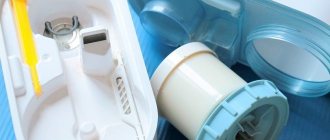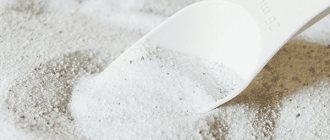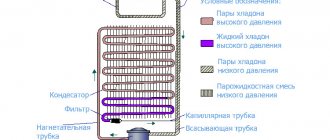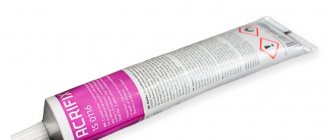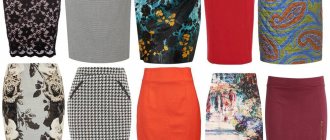For normal human life, the humidity in the room should be 40-60%. Dry air irritates the mucous membranes, can provoke the development of allergies and leads to a decrease in immunity. An incorrect microclimate in a room is especially harmful for young children - they begin to be capricious for no reason, sleep poorly and often get sick.
To optimize the level of humidity in the room air, some people hang wet towels in the bedroom or place a bucket of water. Agree that such methods are not entirely aesthetic. You can solve the problem with the help of air humidifiers. But they are presented in a wide range and you don’t know how to choose the best option?
In this article, we will figure out which air humidifier is better than steam or ultrasonic, for which we will consider in detail the characteristics of existing types of air humidifiers. We’ll also talk about the rules for caring for such equipment.
Features of steam humidifiers
A household humidifier helps create the most comfortable microclimate for a person in the house. When used correctly, the device will help get rid of poor health, irritability, and drowsiness.
To compare a steam humidifier with an ultrasonic one, you first need to familiarize yourself with the features and characteristics of each of them. So, let's start with steam.
How does the device work and work?
A steam humidifier consists of a heating element, a water tank and a supply valve. During operation of the device, the liquid turns into steam and goes outside, quickly humidifying the room.
A working steam humidifier can be compared to a boiling electric kettle. Only it does not turn off after the water boils. Liquid is supplied to the heating element in small portions. This principle of operation allows you to save electricity, since you do not need to heat the entire volume of water at once.
Special heating elements or electrodes are used as heating elements of steam humidifiers. They allow you to quickly heat water and bring humidity levels into order.
Steam humidifiers have high performance. Changes in humidity levels in a room occur quite quickly. Some models are capable of evaporating up to 700 ml of water in an hour of operation. Therefore, you need to take care of the device so as not to turn the room into a “steam room”.
Many versions of steam-type devices are designed for large premises and industrial conditions: museums, hangars, warehouses and others. There are also household models. They are ideal for winter gardens and indoor greenhouses.
Advantages of steam humidifiers
If a steam-type humidifier is selected taking into account the area of the room, installed correctly, and serviced on time, then it will work for a long time and household members will notice only the positive qualities of the device.
Modern models of humidifiers have a built-in hygrostat in their design and are equipped with an automation system. Such devices are more convenient because they work automatically. The device turns on when the humidity level drops
Advantages of the device:
- affordable cost and no additional costs for the purchase of filters, as well as cartridges for water softening;
- rapid air humidification up to 60% - the injection of moisture into the room occurs faster with their help than with ultrasonic analogues;
- Thanks to boiling water, the steam released is completely sterile - there are no germs or bacteria in it;
- the efficiency and performance of the device does not depend on the room temperature;
- some variations have additional functions and can be used as a flavor or inhaler;
- safe use - the device automatically turns off if all the water from the tank has evaporated or the lid is not tightly closed.
Steam humidifiers are unpretentious. Their steam does not leave a white residue on the flooring, furniture or walls. You can fill the device’s container with tap water.
The device does not require filters, but its tank must be periodically descaled.
Main disadvantages of devices
The relatively high consumption of electricity and water are the main disadvantages of steam devices.
The device can consume about 0.6-0.7 liters of water per hour. Therefore, when buying a steam humidifier, it is better to give preference to models with a large tank
Depending on the model and power, the device consumes from 200-600 W. Installing such a high-performance device in a large room can add up to a significant expense.
Also the disadvantages include:
- the ability to exceed the required humidity level of 50-60% - this is typical for models without a built-in hygrostat;
- loud noise during the boiling process, which can interfere with comfortable sleep;
- scale formation on the heating element or other elements - you need to remove deposits in time or the device will fail;
- condensation formation - there should be no books or wooden furniture near the device, as they may suffer from constant exposure to steam;
- possibility of getting burned - it is not recommended to install steam humidifiers in children's rooms, since hot steam is unsafe, and boiling water inside the tank can cause harm if the device is accidentally knocked over.
Not all steam humidifier models are equipped with a hygrostat. Without constant monitoring, they can over-humidify the room. Too high humidity promotes the growth of bacteria and the development of mold. Therefore, it is better to purchase models with a built-in humidity sensor or buy a hygrometer separately and monitor moisture levels.
Steam humidifiers increase the temperature in the room by 1-2 degrees. This feature can be attributed to both advantages and disadvantages. During the cold season, an additional heat source will be useful. If the room is hot, then this function will definitely not provide comfort to the household.
Performance
Expert Daniil Golovin says:
– The main criterion that should be taken into account when choosing is, undoubtedly, the performance of the humidifier: how much water it can “process” in an hour and saturate the air with it. Alas, often the actual performance of a humidifier can be noticeably less than stated. This is bad because the increase in air humidity will occur slowly; under certain conditions, the indicators may never reach the norm (40–60%). You can’t check this in a store, so it’s better to conduct a thorough search on the Internet (look for various tests first) or focus on models with the maximum declared performance (there is a chance that, even if it is less than declared, it will still be enough for effective work ).
Characteristics of ultrasonic humidifiers
During operation, ultrasonic units produce cold steam. They consume minimal electricity because there is no need to heat water. Let's consider their main characteristics in more detail.
Design and principle of operation
Such humidifiers are sensitive to the quality of the supplied liquid. They cannot function without water softener cartridges.
The basic package of ultrasonic devices includes a water tank, a two-jet sprayer, an ultraviolet lamp, a low-speed fan and other parts.
Operating algorithm of ultrasonic type units:
- Distilled or purified water is poured into the tank.
- Water flows by gravity into the cartridge and is further purified.
- The heating tube brings the liquid to the desired temperature.
- Water is transported to the evaporation chamber. There, a piezoelectric element (membrane) breaks the liquid into small particles, forming a cloud of cold vapor.
- A fan blows damp mist into the room.
From the outside, it may seem that the “fog” is hot, but it is not. If you put your hand under the stream of steam, you only get a feeling of freshness and coolness. Such device options are more preferable for use in children's rooms.
Advanced variations of ultrasonic humidifiers have a built-in hygrometer and air ionizer in their structure. The devices can be equipped with an LCD display and have a remote control function
Expensive models of humidifiers are equipped with an ultraviolet lamp. It treats the steam before releasing it into the room, destroying microorganisms and bacteria.
Some useful features of some devices also include the ability to spray water mist in all directions. There are devices equipped with anti-foaming and self-cleaning functions.
Pros of ultrasonic humidifiers
Easy to use, easy to maintain, and maintain an optimal level of humidity – these are the main positive characteristics of ultrasonic humidifiers.
Humidifiers look stylish, are safe, and also consume a minimum of electricity. Appliances are sold in a wide range, so choosing a model that will suit the overall decor of the room is quite easy.
Ultrasonic humidifiers typically produce a cool water mist, so they don't have to waste energy on the process of boiling water. There are also models with a steam heating function up to 80 degrees.
Benefits of humidifiers:
- almost silent operation;
- safe use;
- extensive set of functions;
- creation of a steam curtain;
- during normal operation, power consumption is up to 40 W;
- possibility of changing the direction of the steam jet.
Models that are equipped with a hygrostat turn off automatically when the required humidity in the room is reached. Some options have backlighting for escaping steam. These humidifiers are ideal for humidifying the air in rooms where children live.
To familiarize yourself with recommendations for choosing an ultrasonic humidifier and operating rules, please follow the following link.
Significant disadvantages of devices
The devices are sensitive to water quality. They quickly fail if tap water is poured into their container. For normal functioning of humidifiers, you need to use distilled or at least filtered water.
Disadvantages include the high cost of devices equipped with a number of additional functions.
Even when using filtered water, a white residue may appear on the humidifier and furniture. To prevent the possibility of such deposits forming, you need to use high-quality filters and change them in a timely manner.
Climate complexes
This is the highest stage in the evolution of air humidifiers and air purification equipment. The climate complex simultaneously contains an air humidifier similar to an air washer and an air purifier with HEPA filters.
It turns out that the air is not only moistened, but also cleared of all the impurities that are in the air. 99.4% of all impurities contained in the air are purified. This has a very positive effect on the entire human body.
If you have money, then you should stop your choice and take a closer look at climate control systems. This is the best option currently available on the market.
Which humidifier is better?
Steam and ultrasonic humidifiers have many advantages. And choosing the best one among them is quite difficult - both types are capable of qualitatively improving the microclimate in the room.
However, the device must be selected for specific operating conditions. First of all, the area of the room is taken into account, and the power of the device is selected according to it.
In small rooms it is advisable to use ultrasonic models, and in large rooms - steam models.
An ultrasonic type device is suitable if:
- you need a humidifier that is compact in size and can be carried;
- there are no allergy sufferers in the family, and the air in the area of residence is not too polluted;
- there is no desire to incur large energy costs in order to improve the microclimate in an apartment or house;
- light sleeper and need to sleep in perfect silence;
- You need to equip your children's room with a humidifier.
Despite the minimal energy consumption, you still have to incur some costs with ultrasonic humidifiers: the purchase of filters, cartridges and distilled water.
There are so-called ultrasonic micro-humidifiers. Additionally, they can be used as an aroma lamp or a night light. Some models are available with a built-in speaker
Steam types of devices are optimal for families in which the children have already grown up, and no one wants to check the steam temperature with their palm or open the lid during operation.
Using the devices, you can also perform inhalations and disinfect rooms. If such functions are in demand, you should definitely buy a steam humidifier.
Steam humidifiers are ideal if you have a lot of flowers in your home that love warm, humid climates. The device is able to quickly create “humid subtropical” conditions for them.
When choosing a device for humidifying the air, you also need to pay attention to the rate of water consumption, as well as the volume of the tank. If it is not possible to add water every 8-12 hours, then it is better to buy a unit with a tank volume of 6 liters or more.
We provided more recommendations on choosing an air humidifier for your home and apartment in the following publication.
Bottom line: device relevance
When choosing an inexpensive steam humidifier or a reliable, but demanding operating conditions, ultrasonic humidifier for a room, you should proceed from your own expectations.
Inexpensive and easy-to-use devices that use steam are considered more industrial than household. They can often be found in manufacturing, medical institutions and other similar settings.
Home use is justified by the attractive price of a steam humidifier. But it increases the risk of thermal burns.
Almost every small ultrasonic model, on the contrary, is positioned as a “climate assistant” for residential premises. Such devices are safe and can operate without the participation of the owner. But they are more expensive, more demanding on the quality of sprayed water, regular filter changes and careful handling.
Features of caring for humidifiers
Regardless of the cost, modification and number of functions, any devices require timely care and maintenance. For example, in some models of ultrasonic humidifiers it is recommended to change filters or cartridges every 3 months.
Mandatory procedures also include:
- washing the device - performed once a week;
- descaling, which is especially important for steam humidifiers - the procedure is carried out as the device becomes dirty, on average once every 2 weeks;
- disinfection procedures - disinfect the device once a month.
Clean the humidifier using special products. They do their job well, but are expensive. You can also prepare your own cleaning agent from a solution of laundry soap and water (1:2) to combat stains.
Baking soda will help get rid of solid deposits in the humidifier. You need to pour the soda solution into the device’s reservoir and turn it on for 50-60 minutes. To prepare the product, take 50 g of soda per 1 liter of water.
Regular bleach can be used as a disinfectant. To prepare the solution 1 tbsp. l. chlorine is diluted in 4 liters of water. The cleaning procedure should be performed on the balcony or street. After disinfection, you need to thoroughly wash the water tank. Cleaning is carried out with a soft cloth, since hard elements can scratch the equipment.
Timely cleaning and proper operation can extend the life of a household humidifier.
Air washers
There are humidifiers with an air purification function, and there are air washers. Both devices humidify and purify the air. But washers do this without a filter.
A washer is, by and large, a type of traditional humidifier, but with a special drum that traps dust particles. In such a device there is no need to change the filter, but only the water.
True, do not expect the effect of a significant increase in humidity from them. In this regard, they lose to both traditional and ultrasonic models.
Some varieties have a preionization function, which captures particles as small as 0.1 microns. This air purification is comparable to hepofiltration.
If there is no such function, then the sink catches particles from 10 microns.
Conclusions and useful video on the topic
A detailed overview of existing types of humidifiers is shown in the video:
In the article we examined the operating features, advantages and disadvantages of the most popular types of humidifiers. Steam options are cheaper and can even be used for inhalation. However, they are not suitable for everyone. Ultrasonic devices are completely safe and can be used to humidify children's rooms. Their disadvantages include the need to periodically replace filters.
What type of humidifier do you prefer? Are you satisfied with your choice? What pros and cons have you discovered while using your humidifier? If you still have questions after reading this article, ask them to our experts and other site visitors - the feedback form is located below.
Room volume
To determine the size of the humidifier that suits you, you need to calculate the area of the room where you are going to use the device. Tabletop humidifiers are suitable for small rooms, but they will require frequent refilling with water. Large rooms require large humidifiers, but you need to keep in mind that these will be large and heavy devices. Not everyone will be comfortable managing them.
As a rule, manufacturers indicate on models the area for which the device is designed. Also consider the height of the ceilings. For a room of 20 square meters, a humidifier with a tank capacity of 4–5 liters will usually be sufficient
. As Daniil Golovin explains, the declared area can be quite significant, but in a house or apartment where walls and doors interfere with the flow of air, this figure may ultimately be smaller. Therefore, for large apartments and houses, the expert recommends buying a separate humidifier for the bedroom and nursery, possibly for the office. And you can move any of the devices to other rooms as needed.
Important!
Using a humidifier that is too powerful for too small an area will only result in over-watering. And this can cause the development of fungi and mold in the room.
TION
The series of breathers of this brand includes such models as TION Lite, TION O2, TION 3S. Even in the basic configuration, this device includes everything necessary for effective ventilation and air purification. It is characterized by low noise during operation (only 18 dB at first speed). It can be equipped with filters - from simple dust to a full set of filter elements (charcoal filter, prefilter, G4 and HEPA H11). Productivity – up to 140 m3/hour, can work in passive mode (without electricity), controlled via Wi-Fi (model TION 3S).
Ease of use
A humidifier is not a “buy and forget” device. It will require regular maintenance, cleaning, and filter changes. Some models will be easy to clean, others not so much. Before buying in a store, carefully inspect the device, imagine how you will operate it, clean it, and pour water into it. This will help predict all possible design mistakes.
Svetlana Chubatova explains:
– Humidifiers, as well as other household appliances that use water, require special care. There are usually instructions for this in the instructions, but they are often forgotten. After use, the humidifier reservoir must be rinsed and wiped dry. It is better to use disposable wipes, or special ones with disinfectant, including for hands. If this is not done, microorganisms that enter it from the air can very quickly multiply in the device. From the walls of the tank they fall into the water, where they multiply. And already a large number of them again turn into the air indoors, which no longer helps a person, but harms. This is especially true for mold. In addition to the fact that mold can cause diseases of the respiratory tract and skin, it has a depressing effect on the immune system and psycho-emotional state. Humidifiers can be supplemented with special ingredients, such as water-soluble forms of essential oils, that have antimicrobial effects.
OXY
The manufacturer of this brand of breathers is a Russian company. The OXY breather line includes three models – OXY, OXY2 and OXY3. These devices are distinguished by their compact size (246*326*125 mm), the ability to operate in “natural” ventilation mode and cost-effectiveness. Other advantages of OXY breathers include the ability to smoothly adjust the air supply speed, as well as the modularity of the equipment - having installed OXY, you can change it at any time to a more functional model, simply paying the difference in the cost of the devices.
Ideal humidity level
Excessive humidity in the house is also no good. Mold, fungi and dust mites love it. To measure indoor humidity, use a hygrometer. It is often already included in the functionality of an electronic room thermometer (thermostat) or clock.
| Air type | % humidity |
| Very dry | less than 30% |
| Dry | 30-55% |
| Moderately dry | 55-70% |
| Moderately humid | 70-85% |
| Excessively wet | more than 85% |
According to GOST standards, for a comfortable microclimate in residential premises, the general humidity level should be:
in winter - from 30 to 40%, but not more than 60%,
in summer – from 30 to 60%, but not more than 65%
Optimal humidity improves the feeling of comfort in the home
The most comfortable humidity range in living rooms is from 40 to 60%. But there are recommendations for different types of premises:
| Room type | % humidity |
| Living room | 40-50% |
| Study | 40-60% |
| Dining room | 70-85% |
| Bedroom | 45-55% |
| Library or gallery | 30-40% |
| Children's | 50-60% (for colds - 60-75%) |
Important: in the kitchen, bathroom and toilet, humidity is not standardized and can reach 100%, but is controlled through ventilation.
It is possible to achieve ideal parameters using improvised means, although it is quite troublesome. It is much easier to install a modern air humidifier and select the appropriate operating mode for it.
Tip: in cold northern regions, room humidity should not exceed 40% to avoid condensation on windows due to intense heating.
Drying clothes on a heating radiator is a popular method to increase the humidity in the room
Tip: in cold northern regions, room humidity should not exceed 40% to avoid condensation on windows due to intense heating.
Water tank capacity
Information about this can be found in the technical specifications of the model. Here you need to remember that if the humidifier evaporates a small amount of water per hour, and its tank is too small, then you will have to add water every few hours. Multiply these two values and you will understand how long the tank capacity will last.
For information
Focus on evaporation performance of 300–400 ml/h. If the readings are lower, you may not notice the effect of the device at all.
